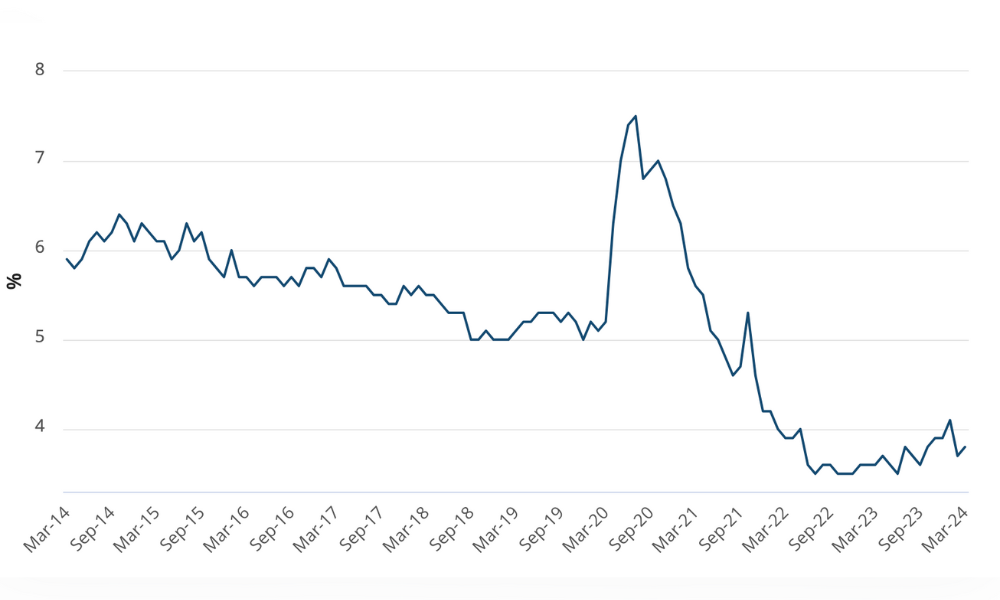When it comes to sexual harassment policies, your managers need as much protection as the workers, according to new research.
Sexual harassment guidelines have typically been written for workplace dynamics where the person with power harasses the person without.
However, HR professionals should be looking into their workplace guidelines, warns a Belgian academic, because the emerging workplace scourge is contrapower harassment, or the sexual harassment of female managers by male subordinates.
University of Antwerp researcher Dr Jan Wynen released a paper last Friday (July 1, 2106) which analysed sexual harassment in relation to power, gender and age. Sexual Harassment: The Nexus Between Gender and Workplace Authority: Evidence from the Australian Public Service found that the upward mobility of women in organisations did not stop them being harassed.
He found that women with ‘supervisory authority’ in the Australian Public Service were more likely to be sexually harassed than those without a position of authority, and while upwardly mobile women are more likely to be harassed, men are harassed less the higher they rise in the ranks.
"Sexual harassment is often still portrayed as an abuse of power in the workplace," writes Dr Wynen. "A good example is the popular characterisation of the ‘sleazy’ male supervisor harassing his ‘powerless’ female secretary.
"The reality proves to be far more complex and it is necessary for organisational policies and training to reflect the diversity of harassment experiences.”
Dr Wynen analysed the Australian Public Service Commission's 2013 staff survey of 100,000 federal public servants and their experience of workplace sexual harassment. He found women aged between 30 and 44 years and doing management jobs are more likely to be sexually harassed than female public servants without supervisory authority.
He found that much of the research into workplace harassment had been based on the ‘organisational’ model which holds that positional, hierarchical power defines harassment between, for instance, the male boss and the female secretary.
But he says that with many managerial and senior management positions now filled by women, the ‘sociocultural’ model of harassment dominates: that’s where power relations are played out on the basis of men interacting with women, not on a basis of organisational politics.
Yet the research shows that the ‘contrapower’ harassment is only evident in the 30-44 age group. “A possible explanation for this could be the fact that as they are climbing the career ladder, they are not yet experienced in dealing with sexual harassment, while older women with supervisory authority have become more competent in dealing with potential harassers,” says Dr Wynen.
He says the systems in place might not be properly targeted. “More women are climbing the career ladder and breaking the glass ceiling, yet the organisational and legal responses to sexual harassment have not kept pace with this evolution.
“In cases of contrapower harassment, organisational policies, and more broadly, organisational culture should allow victims to come forward without undermining their own authority,” Dr Wynen recommends.
By Mark Abernethy
However, HR professionals should be looking into their workplace guidelines, warns a Belgian academic, because the emerging workplace scourge is contrapower harassment, or the sexual harassment of female managers by male subordinates.
University of Antwerp researcher Dr Jan Wynen released a paper last Friday (July 1, 2106) which analysed sexual harassment in relation to power, gender and age. Sexual Harassment: The Nexus Between Gender and Workplace Authority: Evidence from the Australian Public Service found that the upward mobility of women in organisations did not stop them being harassed.
He found that women with ‘supervisory authority’ in the Australian Public Service were more likely to be sexually harassed than those without a position of authority, and while upwardly mobile women are more likely to be harassed, men are harassed less the higher they rise in the ranks.
"Sexual harassment is often still portrayed as an abuse of power in the workplace," writes Dr Wynen. "A good example is the popular characterisation of the ‘sleazy’ male supervisor harassing his ‘powerless’ female secretary.
"The reality proves to be far more complex and it is necessary for organisational policies and training to reflect the diversity of harassment experiences.”
Dr Wynen analysed the Australian Public Service Commission's 2013 staff survey of 100,000 federal public servants and their experience of workplace sexual harassment. He found women aged between 30 and 44 years and doing management jobs are more likely to be sexually harassed than female public servants without supervisory authority.
He found that much of the research into workplace harassment had been based on the ‘organisational’ model which holds that positional, hierarchical power defines harassment between, for instance, the male boss and the female secretary.
But he says that with many managerial and senior management positions now filled by women, the ‘sociocultural’ model of harassment dominates: that’s where power relations are played out on the basis of men interacting with women, not on a basis of organisational politics.
Yet the research shows that the ‘contrapower’ harassment is only evident in the 30-44 age group. “A possible explanation for this could be the fact that as they are climbing the career ladder, they are not yet experienced in dealing with sexual harassment, while older women with supervisory authority have become more competent in dealing with potential harassers,” says Dr Wynen.
He says the systems in place might not be properly targeted. “More women are climbing the career ladder and breaking the glass ceiling, yet the organisational and legal responses to sexual harassment have not kept pace with this evolution.
“In cases of contrapower harassment, organisational policies, and more broadly, organisational culture should allow victims to come forward without undermining their own authority,” Dr Wynen recommends.
By Mark Abernethy





